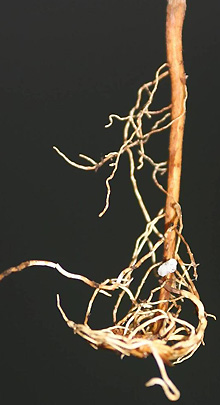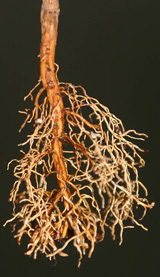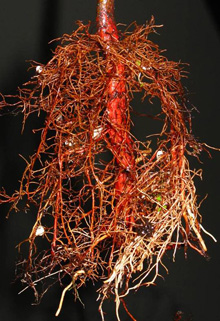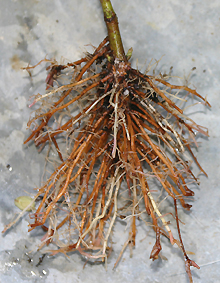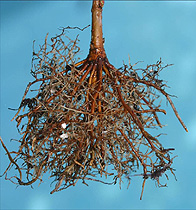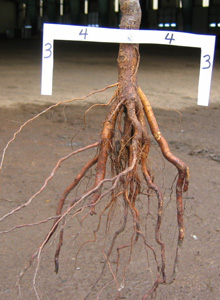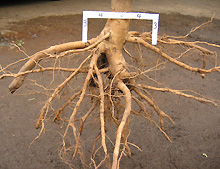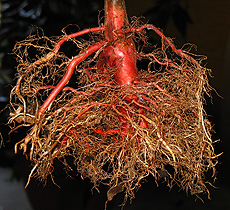Home > Nursery tree production > Root system > Propagating quality liners
Propagating quality liners from seeds and cuttings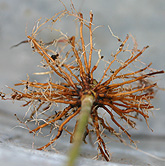
Most shade trees begin as seedlings or rooted cuttings; some are produced using tissue culture techniques such as mircopropagation. Trees are propagated in field soil beds, in open trays, or in small propagation trays or small containers in a greenhouse. Containers range in size from one to several inches across and a few inches deep. Roots quickly reach the bottom and sides of the containers and deflect down or around the pot. If deflected roots are not too large they can be cut to improve root system quality. Roots on some species in field soil grow primarily down at a steep angle. Trees with most roots directed downward by propagation practices may not be as well suited for urban landscapes. Therefore, focus on producing at least some shallow horizontally oriented lateral roots in addition to deep roots.
- Introduction and basics
- Liner pot impacts roots
- Shaving roots in propagation containers
- Slicing roots in propagation containers
- Growing liners in the field
- Latest research
Poor root systems |
Good root systems |
|
Tap root on mahogany was air pruned which generated many straight lateral roots right up to the substrate surface. Elle pot (constructed of very thin paper) allowed lateral roots to grow through paper and air prune. Result was few deflected roots. Copper hydroxide applied to interior container surface can develop similar root systems. See this tree one year later after shifting to larger container. |
|
Tap root on baldcypress was air pruned by an open bottom liner pot which encouraged lateral root growth. Lateral roots hit the smooth plastic sides and were deflected downward placing most root tips at bottom. See this tree one year later after shifting to larger container. |
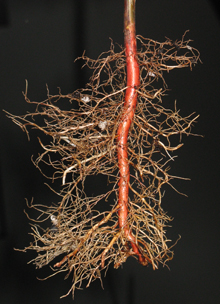 Tap root on baldcypress was air pruned which generated many straight lateral roots right up to the substrate surface. Elle pot (constructed of very thin paper) allowed lateral roots to grow through paper and air prune. Result was few deflected roots. See this tree one year later after shifting to larger container. |
|
|
|
Roots on maple are deflected down, up, and around the smooth sided plastic propagation container. See this tree one year later after shifting to larger container. |
Maple grown in Elle pot (constructed of very thin paper) allowed lateral roots to grow through paper and air prune. More roots hit the sides at an angle resulting in more deflected roots that seeds grown in paper pots. See this tree one year later after shifting to larger container. |
|
|
Two examples (mahogany left, baldcypress right) below of liner root systems with ample lateral roots produced by growing in a container with sides and bottom comprised of 90% air and 10% plastic. This liner root system may produce a finished nursery tree well adapted to urban soils due to amply lateral root growth. Testing is underway (April 2010). |
|
Good root system |
Good root system |

